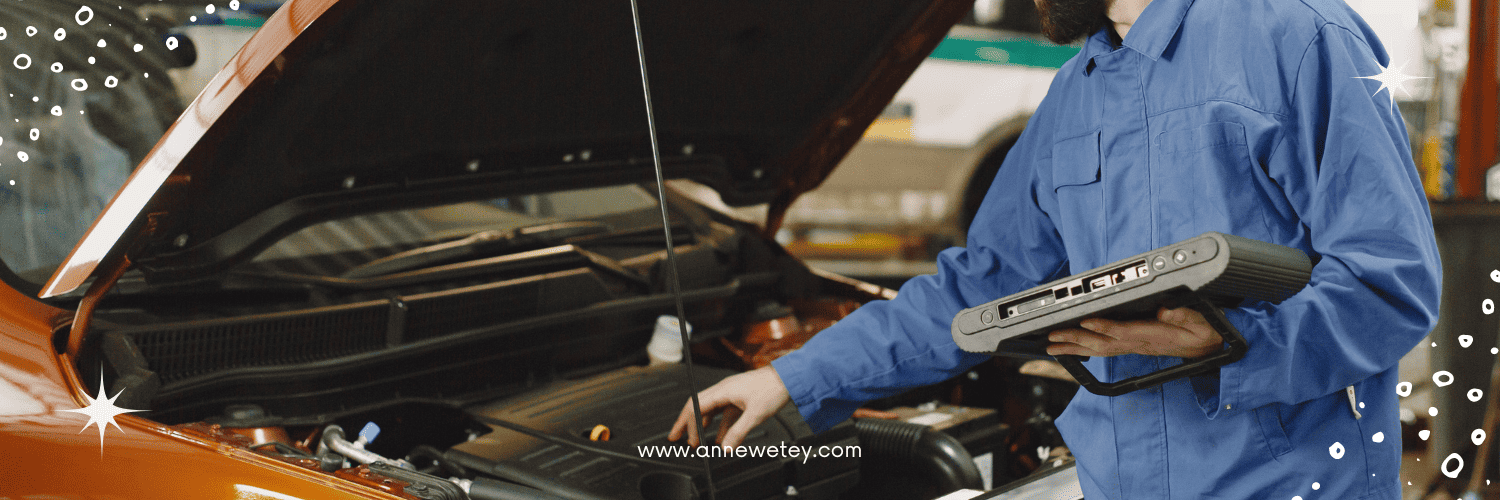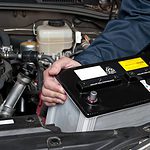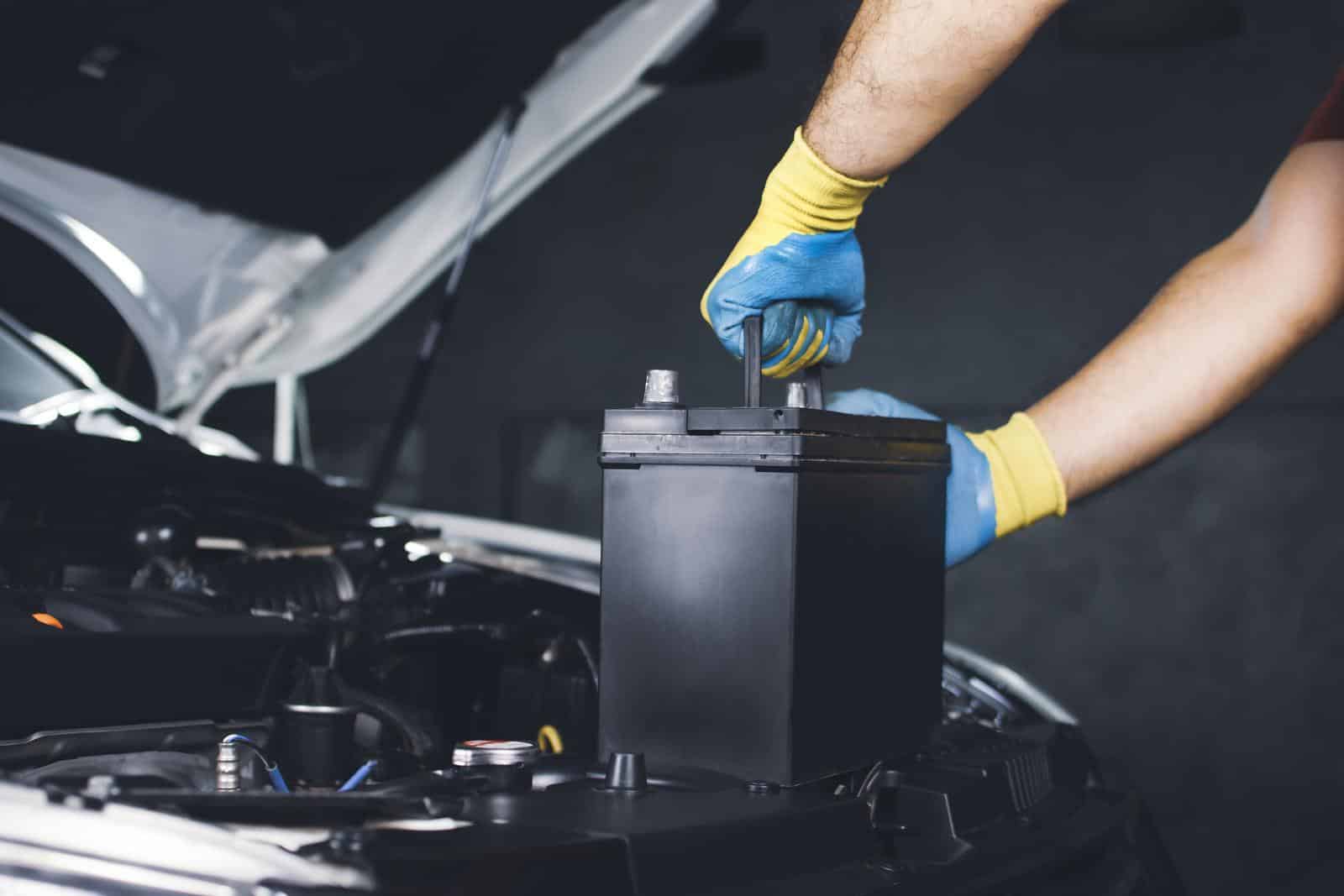What You Really Need to Know About a Leaking Car Battery.
Introduction
If you suspect that your car battery has a leak, don’t wait until it’s too late. The sulphuric acid in a car battery can eat through clothing and skin, and it can also damage other parts of the car. Take action now.
This article will explain how to identify the symptoms of a battery leak, the causes, what to do about it and how to dispose of a leaking battery.
This article only discusses rechargeable lead-acid batteries and not alkaline batteries (household batteries) or lithium batteries.
Remember, always protect your skin and put on gloves and eye protection when working with batteries.
What are the Signs of a Leaking Car Battery?

If you notice any of the following signs, then your car battery may be leaking:
- Your car may not give a quick start because of low battery strength.
- The battery case may be “sweating” or wet around the battery caps or on top of the battery.
- Low battery fluid level. If your battery is the fillable type, you may notice that one or two cells are completely dry or very low compared to the others.
- A bad, rotten egg smell coming from the battery. This is caused by the sulfur in battery acid fumes.
- Corrosion on metallic parts around the battery (this may include the battery posts depending on the cause of the leakage). A bluish, white, green, or brown powdery substance around the terminals or battery compartment can be a sign of leakage.
- The battery case may be swollen, bloated or deformed.
- Fluid on the ground where you park your car. If you see a white, powdery substance or whitish discoloration on your driveway or garage floor, it could be a sign of battery leakage.
What to do If Your Car Battery Starts Leaking?

If you notice your car battery leaking, it’s important to take action immediately. The best thing to do is to take it to your car service center or a mechanic. However, there are a few things you can do if your car battery leaks:
- Wear long sleeves to avoid skin contact and put on gloves and eye protection when working with batteries.
- First, you will need to remove the old battery from the car. This can be done by unscrewing the battery terminals. Place the battery on plastic sheets to prevent damage to your driveway or floors.
- Check the battery terminal posts and the battery compartment for corrosion. If there is corrosion, you will need to clean it off with sandpaper, a wire brush, some baking soda solution or any commercial battery terminal cleaner. You can also neutralize the acid with a neutralizing agent or alkaline solution (e.g. a fizzy drink or even mild soapy water). If the damage is too extensive, you may need to replace the corroded battery terminal. You should then wash and dry the area around the battery.
- The next thing you should do is check the battery case for cracks or holes. If there are any, you will need to replace the battery. If you find that the battery case is swollen or deformed or hot to the touch, you will need to replace it.
- Check the Battery Acid Level: If it is low, you will need to add more acid to the battery.
- Test the battery voltage with a voltmeter to see if it’s holding a charge. If not, it needs to be replaced.
- You may need to charge the battery with a trickle charger or a smart battery charger overnight to make sure it’s fully charged before using it again.
What Causes Car Battery Leakage?

Knowing the cause of a battery leak can help you decide what to do to fix the problem. There are four major factors which can cause a battery to leak: battery cell expansion, overfilled battery chambers, a cracked or damaged battery case, or an unsecured battery.
1. Battery Cell Expansion
Battery cell expansion can be caused by long term discharge, old age, overcharging or extreme cold temperatures.
Bulging sides or raised terminals are both signs of battery cell expansion.
Battery cell expansion is permanent and there is no fix. Prepare to change the battery as soon as possible even if it still starts the vehicle.
a. Long Term Discharge
Sulfation is the formation of lead sulfate on a plate or cell during a discharge cycle. Small sulfate crystals to form on the internal plates of your battery during the normal usage of your car battery. Recharging the battery reverses most of this crystal formation.
However, if a battery is not used, the lead sulfate will continue to build up and take up so much space within the battery case that eventually the battery fluid will leak. Permanent Sulfation can occur if the battery is not properly charged or if the battery is old.
Solution: If you have a car that is not driven often, it is important to keep the battery charged. You can do this by connecting a charger to the battery or by starting the car and letting it run for a while.
b. Old Age
As explained above, a little sulfation is a normal part of the chemistry of a lead acid battery. However, over a long period the amount of sulfate crystal builds up even with normal battery usage. In time, the lead sulfate salt crystals will begin to hinder the negative active material from taking part in the battery reactions. This also causes the physical expansion of the lead plates. As the battery cells expand, there is less space for the battery fluid. It gets forced out and leaks through the vents of the battery.
Solution: There is no solution to this other than to replace the battery as soon as possible.
c. An Overcharged Battery
Overcharging your car battery can cause it to leak. Overcharging happens when the alternator is not working properly or when the battery is left on a charger for too long. When the charging system cannot shut off properly, the battery continues to charge even after it is full. This can cause the battery to overheat. The electrolyte level in the cells rises and the cells expand. If the electrolyte level gets too high, it can also spill out of the battery, causing corrosion and damage to nearby surfaces. A bad smell and hissing sound from the battery vents can be a sign of overcharging.
Solution: Remove the battery from the by car disconnecting the battery terminals and place the battery in a plastic pail of cold water. If the alternator is found to be faulty, get a professional mechanic to correct the problem. After the battery has cooled completely check the battery voltage and recharge with a compatible charger. If the battery tests okay, you may reinstall it otherwise get a replacement battery.
d. Extreme Cold Weather
Did you know that exposure to extreme temperatures can actually cause your battery to leak? Here’s what you need to know about this potential problem and how to prevent it from happening to your car.
When the temperature outside drops, the liquid inside your car battery freezes. This can cause the battery cells to expand and put pressure on the internal structure of the battery. Over time, this can lead to battery leakage.
Solution: The best way to prevent this from happening is to keep your car battery warm. You can do this by parking in a garage or using a battery blanket.
2. Overfilled Battery Chambers
If you have ever had a refillable car battery, you know it’s important to keep the battery chambers filled with distilled water. However, if you overfill the battery chambers, it may cause the acid to leak out. Always top up the battery fluid to the maximum mark indicated on the side of the batteries and no more. If in doubt, just make sure the fluid covers all the cells and then stop filling.
Solution: If you notice your battery leaking after it has been topped up, you will need to reduce the amount of battery fluid to the correct levels. Get this done at a qualified battery shop or mechanic.
Use a hydrometer (looks a little like a turkey baster) to draw out/ suction the excess battery fluid and collect it into a plastic or glass container. Neutralize the excess acid using baking soda or dilute it with loads of water.
Safety first: always protect your eyes and wear the correct clothing when working with battery acid.
3. A Cracked or Damaged Battery Case
Typically, your battery casing is designed to be very tough because the manufacturers know that batteries contain highly corrosive and dangerous sulphuric acid solution. However, you may still develop a crack in your battery case due to the following reasons:
- The battery is not properly secured and moves around in the battery compartment.
- Impact on a sharp object in the battery compartment or battery seat can damage the battery.
- Impact such as a car accident or accidentally dropping the battery.
- Overcharging also can build up enough pressure and heat to crack the heat seals around the top of the battery or underneath the battery terminals and cause a leak.
Replace the battery with a new one and clean up any corrosion that has formed. It is possible but not advisable to fix a crack or damaged battery case.
It may seem wasteful to replace an otherwise healthy car battery, but in most cases, it is not worth the hassle. Even with the correct tools, skilled technicians hesitate to do this type of repair because it is rarely a long-lasting solution and dangerous. It is better and safer to just replace the battery completely.
4. The Battery Not Securely Held Down

Car batteries must be kept upright and secured in place to prevent excessive shaking and movement in the battery compartment. Ensure that the battery brackets or hold-downs provided by the car marker are properly attached and tightened so that the battery doesn’t shake and move about excessively on bumpy roads. This will prevent excessive vibrations which damage the internal structure of your battery and also prevent leakage of battery fluid through the top or the side vents.
Can a sealed battery leak? Yes, even a sealed battery has vents to release gases produced during the charging of the battery. A battery that is not upright may leak through these vents.
Potential Problems Caused by a Leaking Car Battery

A leaking battery can cause a number of problems, including:
- Reduced power output: A battery that is leaking acid will have reduced power output. This can lead to dimmer headlights and less power for accessories like the radio.
- Serious Personal Injury: If the acid comes into contact with your skin, it can cause chemical burns, which typically take a long time to heal and may leave a nasty scar. A lot of modern cars now have their batteries installed inside the car or in the trunk. The fumes from a leaking battery can severely irritate your eyes, nose and throat.
- Corrosion: Battery fluid is a highly corrosive substance that can eat through metal and damage other parts of your car. Leaving a leaking car battery unchecked can lead to bigger problems such as damage to your paintwork, damage to metal components including the terminals, cables, oil or air conditioning pipes, wiring and electronic components, and even the engine itself.
- Fire hazard: Damage to wiring and electronic components can cause a short circuit and spark a fire.
- Environmental contamination: When batteries leak, the acid can contaminate the soil and water around them. This can be harmful to plants and animals.
How Do I Dispose Of A Leaking Car Battery?

If you have a car battery that is leaking, you will need to take some special precautions when disposing of it. It is illegal in many states to just throw a dead car battery in the trash because car batteries contain lead and acid, which can be very harmful to the environment if not handled properly. Contaminating the soil and water with lead can cause serious help problems for people and animals. You must dispose of such hazardous waste properly.
The first step is to neutralize the acid on the battery. This can be done by pouring baking soda on the battery and then rinsing it off with water. If you are transporting the battery in your car, make sure to place it in a plastic pail or place rubber sheets underneath the battery so that it doesn’t damage the interior of your car. Be sure to wash your hands thoroughly after handling the battery, as the lead and acid can be harmful if ingested.
You can either take it to a recycling center or return it to the store where you bought it. Fortunately 99% of the Lead in batteries can be reclaimed by recycling.You can check with your local auto parts store or department store to see if they have a program in place.
Conclusion

Many people find it difficult or wasteful to replace a leaking car battery because technically, it’s not a dead battery. However, a leaking battery is a “bad battery” even if it continues to start the car. The potential damage to the vehicle’s engine compartment and the risk of injury from the hazardous materials within the battery is too great. We recommend replacing a leaking car battery as soon as possible.


 Previous Post
Previous Post Next Post
Next Post
